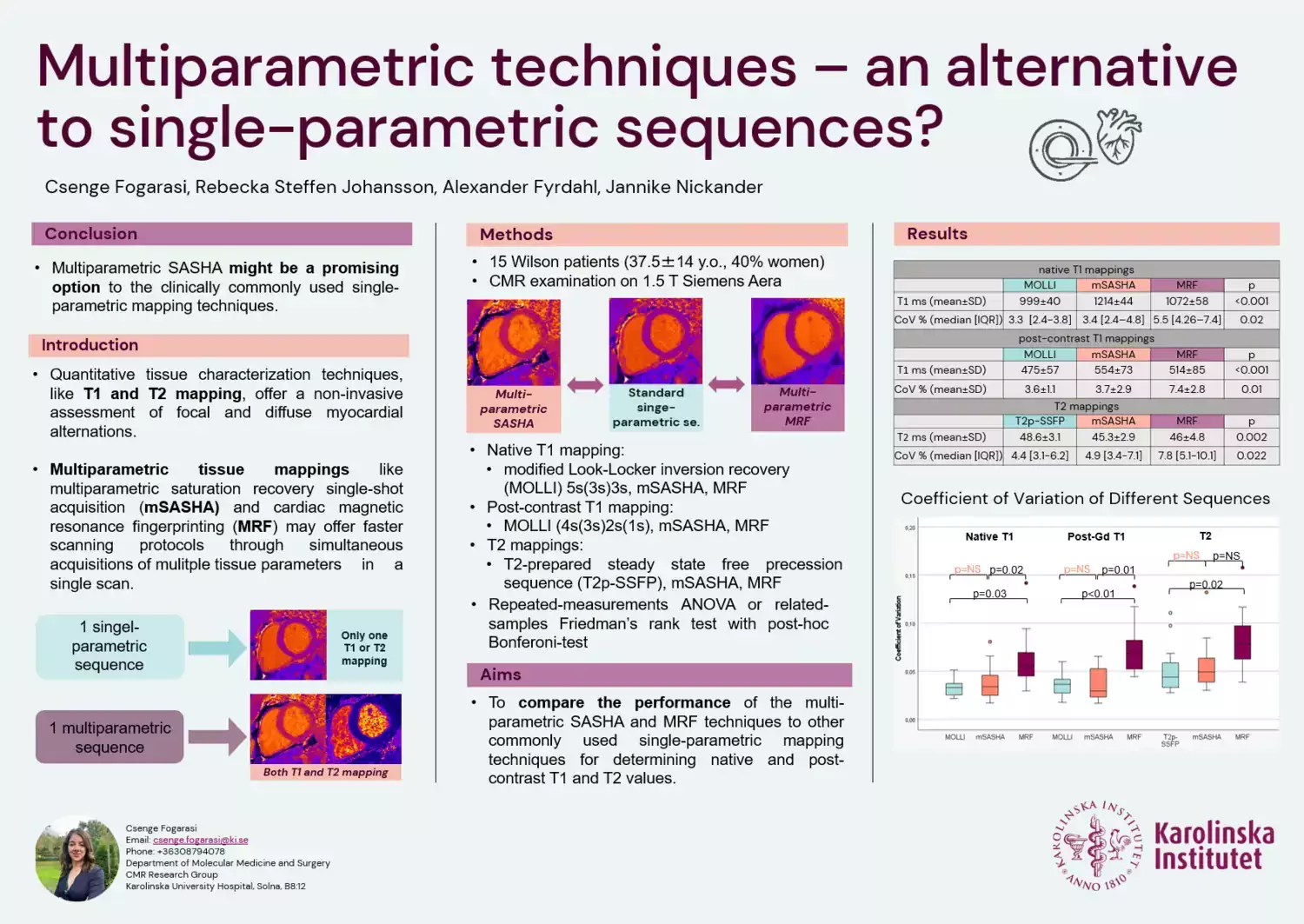Poster 20 - Csenge Fogarasi, Clinical Physiology
MMK Department's Day 2024

Csenge Fogarasi, Clinical Physiology
Title: Multiparametric techniques - an alternative to single-parametric sequences?
Summary
Background: Quantitative tissue characterization techniques can non-invasively assess myocardial alternations. Elevated T1 mainly indicates fibrosis, whereas increased T2 suggests oedema. Therefore, simultaneous T1 and T2 assessment is crucial, which drives the adoption of multiparametric techniques for comprehensive tissue characterization. Moreover, multiparametric mapping techniques such as multiparametric saturation recovery single-shot acquisition (mSASHA) and cardiac magnetic resonance fingerprinting (MRF) may offer faster scanning protocols through simultaneous acquisition of multiple myocardial tissue parameters in a single scan.
Aims: To compare the performance of the multiparametric mSASHA and MRF techniques to other commonly used single-parameter mapping techniques for determining native and post-contrast T1 and T2 values.
Methods: We compared two multiparametric tissue-mapping techniques (mSASHA and MRF) against two conventional single-parameter mapping techniques in 15 Wilson’s disease patients using a 1.5 T Siemens Magneton Aera scanner. The single-parametric techniques used were; modified Look-Locker inversion recovery (MOLLI) 5s(3s)3s for native T1, MOLLI 4s(3s)2s(1s) for post-contrast T1; and T2-prepared steady-state free precession (T2p-SSFP) for native T2 mapping. Segmental measurements were obtained by performing endo- and epicardial delineation, and global values were obtained by averaging all segmental values.
Results: The native T1 values differed significantly across the sequences (MOLLI: 999±40, MRF: 1072±58, mSASHA: 1214±44 ms; p<0.001). Significant differences were observed in post-contrast T1 mapping (MOLLI: 475±57, MRF: 514±85, mSASHA: 554±73 ms; p<0.001) and T2 mapping values (T2p-SSFP: 48.6±3.1, mSASHA: 45.3±2.9, MRF: 46±4.8 ms; p=0.002). Coefficient of variation (CoV) differed in native T1 (p=0.02), post-contrast T1 (p=0.01), and T2 mapping (p=0.022), but post-hoc analyses showed no differences between mSASHA and any single-parametric sequences. Furthermore, the post-hoc analysis of MRF showed higher CoV compared to single-parametric sequences (native T1 p=0.03; post-contrast T1 p<0.01; T2 p=0.02).
Conclusion: T1 and T2 values differed among all methods. The post-hoc analysis revealed a higher CoV for MRF, but not for mSASHA, suggesting that mSASHA might be a promising option to the commonly used single-parametric mapping techniques.
